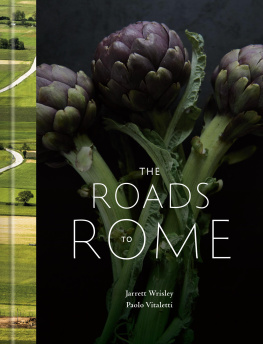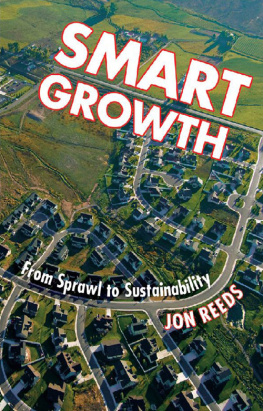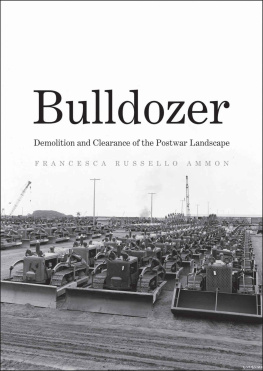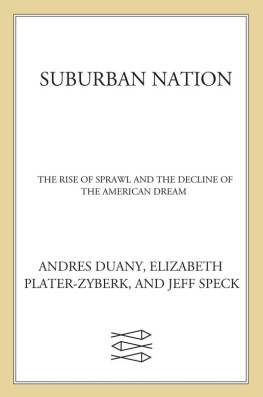The Bulldozer in the Countryside
The concern today about suburban sprawl is not new. In the decades after World War II, the spread of tract-house construction changed the nature of millions of acres of land, and a variety of Americans began to protest against the environmental costs of suburban development. By the mid-1960s, indeed, many of the critics were attempting to institutionalize an urban land ethic. The Bulldozer in the Countryside is the first scholarly work to analyze the successes and failures of the varied efforts to address the environmental consequences of suburban growth from 1945 to 1970. For scholars and students of American history, the book offers a compelling new insight into two of the great stories of modern times the mass migration to the suburbs and the rise of the environmental movement. The book also offers a valuable historical perspective for participants in contemporary debates about the alternatives to sprawl.
Adam Rome is assistant professor of history at Pennsylvania State University.
STUDIES IN ENVIRONMENT AND HISTORY
Editors
Donald Worster, University of Kansas
Alfred W. Crosby, University of Texas at Austin
Other books in the series
DONALD WORSTER Natures Economy: A History of Ecological Ideas
KENNETH F. KIPLE The Caribbean Slave: A Biological History
ALFRED W. CROSBY Ecological Imperialism: The Biological Expansion of Europe, 9001900
ARTHUR F. MCEVOY The Fishermans Problem: Ecology and Law in the California Fisheries, 18501980
ROBERT HARMS Games Against Nature: An Eco-Cultural History of the Nunu of Equatorial Africa
WARREN DEAN Brazil and the Struggle for Rubber: A Study in Environmental History
SAMUEL P. HAYS Beauty, Health, and Permanence: Environmental Politics in the United States, 19551985
DONALD WORSTER The Ends of the Earth: Perspectives on Modern Environmental History
MICHAEL WILLIAMS Americans and Their Forests: A Historical Geography
TIMOTHY SILVER A New Face on the Countryside: Indians, Colonists, and Slaves in the South Atlantic Forests, 15001800
THEODORE STEINBERG Nature Incorporated: Industrialization and the Waters of New England
J. R. MCNEILL The Mountains of the Mediterranean World: An Environmental History
ELINOR G. K. MELVILLE A Plague of Sheep: Environmental Consequences of the Conquest of Mexico
RICHARD H. GROVE Green Imperialism: Colonial Expansion, Tropical Island Edens and the Origins of Environmentalism, 16001860
MARK ELVIN AND TSUIJUNG LIU Sediments of Time: Environment and Society in Chinese History
ROBERT B. MARKS Tigers, Rice, Silk, and Silt: Environment and Economy in Late Imperial South China
THOMAS DUNLAP Nature and the English Diaspora
ANDREW C. ISENBERG The Destruction of the Bison: An Environmental History, 17501920
EDMUND RUSSELL War and Nature: Fighting Humans and Insects with Chemicals from World War I to Silent Spring
The Bulldozer in the Countryside
Suburban Sprawl and the Rise of American Environmentalism
ADAM ROME
Pennsylvania State University

CAMBRIDGE UNIVERSITY PRESS
Cambridge, New York, Melbourne, Madrid, Cape Town, Singapore, So Paulo, Delhi
Cambridge University Press
32 Avenue of the Americas, New York, NY 10013-2473, USA
www.cambridge.org
Information on this title: www.cambridge.org/9780521804905
Adam Rome 2001
This publication is in copyright. Subject to statutory exception and to the provisions of relevant collective licensing agreements, no reproduction of any part may take place without the written permission of Cambridge University Press.
First published 2001
9th printing 2008
Printed in the United States of America
A catalog record for this publication is available from the British Library.
Library of Congress Cataloging in Publication Data
Rome, Adam Ward.
The bulldozer in the countryside : suburban sprawl and the rise of American environmentalism / Adam Rome.
p. cm. (Studies in environment and history)
Includes bibliographical references and index.
ISBN 0-521-80059-5 ISBN 0-521-80490-6 (pb)
1. Environmentalism United States History. 2. Suburbs Environmental aspects United States History. I. Title. II. Series.
GE197.R66 2001
333.73150973 dc21 00-058526
ISBN 978-0-521-80059-4 hardback
ISBN 978-0-521-80490-5 paperback
Cambridge University Press has no responsibility for the persistence or accuracy of URLs for external or third-party Internet Web sites referred to in this publication and does not guarantee that any content on such Web sites is, or will remain, accurate or appropriate. Information regarding prices, travel timetables, and other factual information given in this work are correct at the time of first printing, but Cambridge University Press does not guarantee the accuracy of such information thereafter.
For Robin
Contents
Illustrations
Preface
As my subtitle suggests, The Bulldozer in the Countryside is about the relationship between two of the great stories of modern American history, the mass migration to the suburbs and the rise of the environmental movement. Each story has inspired a considerable scholarly literature. Yet scholars so far have not recognized the important connections between the two stories. The construction of tract-house subdivisions after World War II changed the nature of millions of acres of land, and a variety of people soon began to complain about the environmental costs of suburban development. The Bulldozer in the Countryside argues that the elaboration of an environmental critique of homebuilding in the period from 1945 to 1970 played an important role in the emergence of environmentalism.
When I started my research, however, I did not expect to write a book about the environmental movement: I simply saw a chance to help overcome a serious shortcoming in the literature of environmental history. The scholarship in the field has focused mainly on rural forms of production farming, ranching, mining, lumbering, fishing, and hunting. Yet the enterprises of the metropolis also have had profound environmental consequences. Since I wanted to write about suburbia, I decided to focus on homebuilding. How had the environmental impact of residential development changed over time? In answering that question, I hoped to contribute to scholarly understanding of urban environmental history.
I found abundant evidence that the environmental cost of homebuilding rose sharply after 1945. But that fact by itself seemed lifeless to me. What problems did people notice first? Who took the initiative in trying to reduce the environmental costs of tract-house construction? How did the critics define the issues? What solutions did they propose? Which problems proved relatively easy to overcome, and which problems proved relatively intractable? I realized that my analysis of the environmental impact of homebuilding no longer was the heart of my work. I was most interested instead in how environmental problems became part of the public agenda. As a result, I began to plan a book that would join intellectual, political, and environmental history.
I thought at first that I would write about a particular place. Like social historians, environmental historians often have used case studies to examine big changes, and many of the issues I consider here were discussed in countless cities and counties across the country. I soon concluded, however, that a case study would not allow me to discuss all the intellectual and political changes that interested me. The postwar transformation of the homebuilding industry received national attention, and the most important debates about the environmental impacts of tract-house development took place in national forums: journals published by trade and professional organizations, congressional hearings, conferences sponsored by federal agencies. I therefore decided to focus on national trends.
Next page








